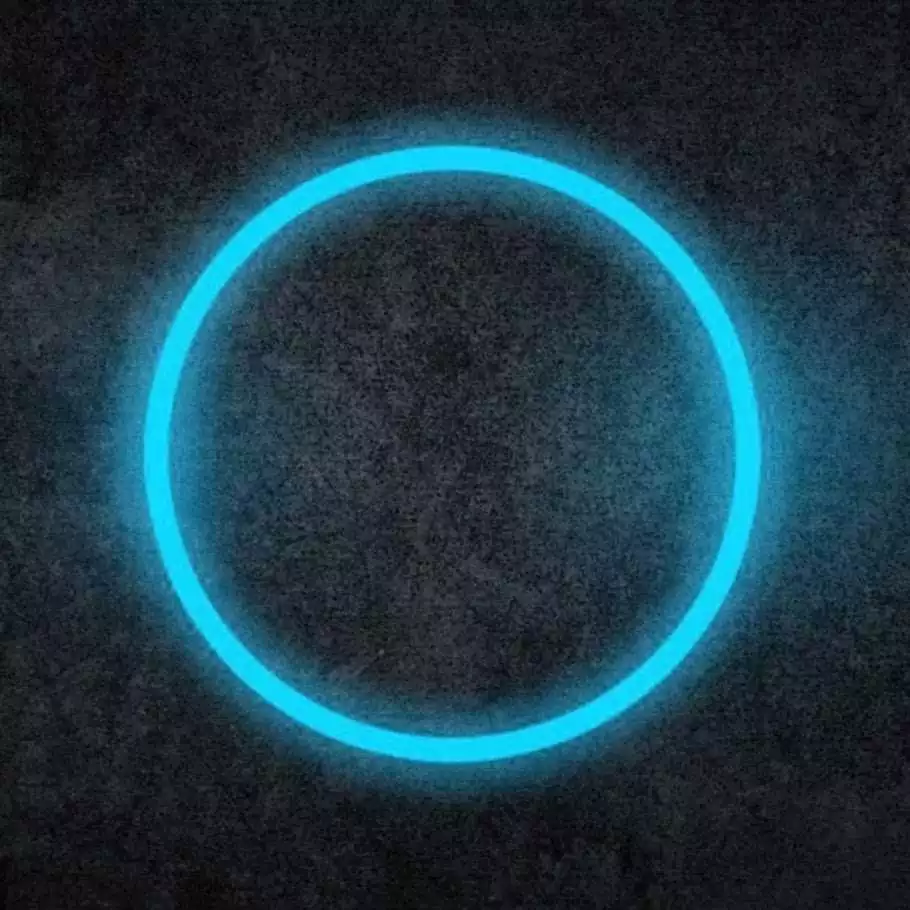What if charging your phone took less time than brushing your teeth? A new study published in Proceedings of the National Academy of Sciences could very well hold the key to a next-gen charger capable of recharging your phone in just 60 seconds.
Researchers from the University of Colorado Boulder have discovered a new cutting-edge technique that could make it possible to charge devices almost instantaneously. This would make charging phones, laptops, and even electric cars much more efficient and convenient. The foundation of the new technique is based on new insights into how ions move through supercapacitors.
The key, one of the researchers explains in a press release, is to make the movement of the ions more efficient. By doing this we can make the charging and release of energy much faster, allowing for that next-gen charger that is capable of boosting your phone’s charge from 0 to 100 in just a minute, or maybe even less.
To make this discovery, the researchers looked at the movement of ions through a complex network of interconnected pores running through the supercapacitor. Their findings have helped modify a scientific law that researchers have used to govern electrical currents for more than 175 years. This law, called the Kirchhoff circuit law, describes the flow of electrons in a simple loop of wiring in most classes.
However, when inspecting the ions and their movement, the researchers found that the ions move fundamentally differently at the intersections of tiny nanoscale pores when compared to how electrons move near the same locations. Further observations helped them determine that these movements are different from what Kirchhoff’s law describes. This doesn’t completely throw out the old laws, though, as they still provide valid explanations for how electronics flow within conventional electronic circuits.
However, to create a next-gen charger capable of taking full advantage of the movements of the ions, we have to look at things different. This, the researchers say, is “the missing link” that they have been looking for. Creating more efficient energy storage has been a long-term goal for many engineers.
We’ve seen water-based batteries capable of storing more than traditional lithium-ion batteries. Still, a method that lets us charge our batteries almost instantly would remove a lot of the hindrances surrounding the wider adoption of things like electric cars. Not to mention how much more convenient a next-gen character would make charging laptops, phones, and other electronic devices.
Yeah, no. This is not about chargers or batteries or phones or cars. This study is about improved charge/discharge rates for supercapacitors.
Supercaps have very high flow rate, but extremely low capacity. Put them in a phone or a car and it would run very fast for five minutes. Supercaps are useful, don’t get me wrong, but they’re not batteries.
Very cool research from UC Boulder, but the journalism leans way too far into clickbait.
The bigger issue I would see is the heat created from dumping all that energy in at once. And can a US outlet even provide that much power?
Solid point. A laptop battery is around 60Wh, and charging that in 1 minute would pull 3.6kW from the outlet, or roughly double what a US residential outlet can deliver.
Supercaps stay pretty cool under high current charging/discharging, but your laptop would have to be the size of a mini fridge.
The research paper itself was only talking about using the tech for wearable electronics, which tend to be tiny. The article probably made the cars-and-phones connection for SEO. Good tech, bad journalism.
Could you have a bunch of them and draw from them in sequence?
Increasing capacitance (how much charge is stored to reach a certain voltage) or the voltage it is charged to would indeed increase the capacity. Putting several in parallel would work, as would making a bigger capacitor. The main problem as far as I can tell is that the energy density of even supercapacitors is low, so you’d need a much larger volume to have the same capacity (and thus a much thicker phone).
Thanks for this - I was doing some reading in the meantime which confirms what you’re saying about power capacity.
https://en.wikipedia.org/wiki/Capacitor_electric_vehicle
As of 2010, the best ultracapacitors can only store about 5% of the energy that lithium-ion rechargeable batteries can, limiting them to a couple of miles per charge.
Yeah, this matches my experience.
A supercapacitor buffer will cost around twice as much and deliver around 1/10th the watt-hours of a similarly-sized lead acid battery. And lead acid isn’t exactly great to begin with.
Capacitors are useful, but only in applications where the total amount of energy stored is more-or-less unimportant.
This sounds at least 10 years from an actual product.
!remindme 10 years
Stories like this have been posted every so often to reddit. I’ll believe this is possible when I see it available in consumer electronics (and not just lab conditions).
Mostly due to lobbying?
Mostly due to further research and then product development and then safety testing and certification?
I was implying that it could be <10 years if there was no opposition to the new tech.
One hour is fast enough
Can we focus on other things, like making devices cheaper or idk, NOT spy bricks
clears throat one hour is not fast enough.
Well, yea. Tho it would be cool to be able to slow charging down in software, I wanna sleep while charging without overcharge
That exists. It’s called adaptive charging. If you have a modern Pixel: Just set an alarm before plugging the phone in, and it will slow the charge to hit 100% when the alarm goes off. I don’t know what other phones have this feature but I’m pretty sure it’s just part of Android 14 if the hardware is compatible.
deleted by creator
It doesn’t slow charge, at least not on Pixel 7a. Well, you could argue whether 20W is slow charging, but it’s all this phone can do.
It just charges normally to 80%, stops, and then resumes charging about an hour or two before the alarm. And last time I used it, it had a cool bug where if it fails to reach 80% by the point in time when it’s supposed to resume charging, it will just stop charging no matter what the current charge level is. Since that experience, I just turned this feature off and charge it in whenever it starts running low.
Can my grapheneos pixel 6a do it? I’ll try tonight
If you have root, you can try acc magisk module. I can set charging treshhold and limit charging current with it.
Fairphone 5 can force slow charging via settings. I use it all the time because I usually charge over night and it helps preserve battery life.
That is another matter altogether. Apple has that feature that limits the charge to 80%. Easily done. In fact, as we move to AI, we can create much more intelligent charging schemes that can be tailored to the user.
But when it comes to actual charge times, obviously less is better. Not sure why anyone in their right mind would get upset over lower times and claim that things are fine now. It’s like fighting against electricity because you love your typewriter.
Thing we’re unnecessarily shoehorning AI into #2985490385343: Charging a battery
Android already does that, no AI required. Some fairly simple math is enough.
The device first charges to 80% and holds there. It also calculates how long it will need to charge from there to full and when it will need to resume charging so that it will hit 100% just before the next alarm goes off. Then it does that.
Yea, tho, with fast charging like this. My single 33w charger already makes devices hot, this could cause that too
If it doesn’t come at the expense of battery wear, then sure, lower charge time is just better. But that would make phone batteries the only batteries that don’t get excessively stressed when fast charging. Yeah, phone manufacturers generally claim that fast charging is perfectly fine for the battery, but I’m not sure I believe them too much when battery degradation is one of the main reasons people buy new phones.
I have no clue how other manufacturers do it (so for all I know they could all be doing it right and actually use slow charging), but Google has a terrible implementation of battery conservation - Pixels just fast charge to 80%, then wait until some specific time before the alarm, then fast charge the rest. Compare that to a crappy Lenovo IdeaPad laptop I have that has a battery conservation feature that sets a charge limit AND a power limit (60% with 25W charging), because it wouldn’t make sense to limit the charge and still use full 65W for charging.
Sorry all we’ve got is negligible better camera and slightly thinner.
How about we make phones repairable. Like maybe removable batteries like in the fairphone.
How about both?
posted from my iPhone
How about two batteries that can be ejected and swapped without powering off the device? We don’t need to wait for super-capacitors today.
iPhones… someday. :)
I remember when you could fully charge your battery in under 30 seconds.
REMOVABLE BATTERIES BITCH
Well, that’s not really charging, now is it?
…and explode them in the next 60
Consider that the energy output of a 12-gauge shotgun is approximately 4500 Newton-meters and, from personal experience, can rotate a first-gen iPad at an extrapolated 240 rpm (extrapolated as this proved difficult to sustain). That gives us an equivalent of 113 kW! A modern ipad would only need about 13 kW to charge in one second.
So, one shotgun shell could easily charge yours and 7 of your friends ipads instantaneously, although the results are difficult to appreciate.
I feel the Doc in Back To The Future vibe.
Marty! It’s your children! The little bastards won’t stop playing Ska-booby toilets!
No, most phones are allready safe to leave on your charger all night.
probably because they currently don’t get stuffed a bucketload of crackly juice* in 60 seconds
*I don’t, in fact, know how electricity really works
More like, “Shoving it in so fast it makes the sauce in the battery super heat and create a bomb”
Been charging my phone overnight for years. Battery health is 100% and I never have to worry about charging.
Impossible for battery health to be at 100% after years. May still be working great, but not 100%.
Battery degradation is ridiculously unpredictable. I’ve seen 100 cycle batteries at 75% and 2500 cycle batteries over 90%. I only dealt with like 5 MacBook models
Agreed, but not a “charge overnight for years” but no degradation at all.
Depending on what battery protection modes are in play, many have smart charging or other features designed to prolong life. Also a fair few batteries come out with greater than design capacity from the factory. It’s called a design capacity and not an absolute capacity for a reason. A phone battery that left the factory at 110% could conceivably still be at or above 100%.
Fyi it’s not overnight charging that’s the issue either, it’s charging to 100%. What one device consider 100% varies and devices will essentially lie to you about it. 4.2V is normally considered 100% full for Lithium Cobalt Oxide batteries yet some devices push higher than this while others skirt under to pad capacity and cycle life respectively. It’s about tradeoffs.
My worthless phone charges fast enough.
Can we please just have food, shelter, healthcare, peace, sustainabilty, etc?
Sure but I doubt these researchers are in a position to provide all that
No! Now take this slave labour cobalt and partake in the market place of ideas… I said partake! *shakes fist*
Figured I’d do the math on the power required.
In the article, they show a iPhone 15 Pro, which has a 3274 mAh battery, so let’s go with that. Assuming a 3.7 V battery and a 1 minute charging time, that’s
3274 mAh × 3.7 V / 1 min ≈ 727 W.They might just as well sell PC power supply to USB adapters then.
Call me skeptical I guess but if you wanted a phone that worked as long as lithium say 5000mah using capacitors I think it would be a dozen times larger at least.
Maybe I’ve got it wrong and supercapacitors hold more energy or something like that.
you are correct
supercapacitors
I can’t even imagine the heat generated from charging a battery in 60 seconds. Gonna get branded by my bezel
Just smart phones? Or can I charge my gameboy with this?
I look forward to charging my phone 60 seconds before leaving the house 👍
Never mind phones, what about cars?
From the article
This would make charging phones, laptops, and even electric cars much more efficient and convenient.
Yeah but I doubt that’s actually the case based on the physics involved. We need fast charging cars way more than fast charging phones.
Email the researchers with your complaints
Why do you feel that the researchers are wrong about their physics research?
The researchers who wrote the paper only mentioned possibly applying the tech to very small things like wearables and Iot applications where a large capacitor might be relevant. It’s the journalist summarizing it that makes the wild claims about phones and cars, which don’t tend to use capacitors for a bunch of reasons, not least of which is that they tend to be physically twenty times larger than a given battery of the same capacity.
If people are able to deal with batteries anywhere near that large, then I’d imagine most of them would choose twenty times the battery life/ range over being able to charge fast enough overload a wall outlet/ small power plant.
More of an actual comment, good. More efficient capacitors in both speed and heat certainly helps in charging devices of all sizes. Of course it wouldn’t be charging large batteries in seconds, but that doesn’t mean no improvement.
No, it doesn’t effect devices of all sizes, only devices that might use this specific bulky capacitor, all other devices will show exactly zero improvement because there is no real point to mixing capacitors in with a large battery. Being able to quickly get three minutes of charge per whole hour of battery capacity you replace with capacitors just isn’t that useful because you might as well just stay plugged in for an extra few minutes and get the same charge plus that extra hour before needing to find a charger at all.
As for EV’s the problem is even more pointless, as being able to go a half mile the street from a charger massive enough that it can output a small power plants worth of electricity is similarly to specialized of a use case to be worth the loss of range and greater degradation of the rest of the battery.
Almost every electrical system on the planet uses capacitors. Especially high power systems. Of which evs are.
“No real point in mixing capacitors in with a large battery” ?? That’s done literally all the time for both filtering and for intermittent high power output. Like when I say almost every electrical system uses caps, I mean almost every electrical system.
So an electric car might hold 100 kWh. To charge that in 1 minute you would need 6000 kW of power, or 6 MW. Typical “rapid” chargers today do 350 kW and these are the kind that are difficult to find. A nuclear plant makes around 1,000 MW so if you had 166 cars charging at once you would overload one.


















